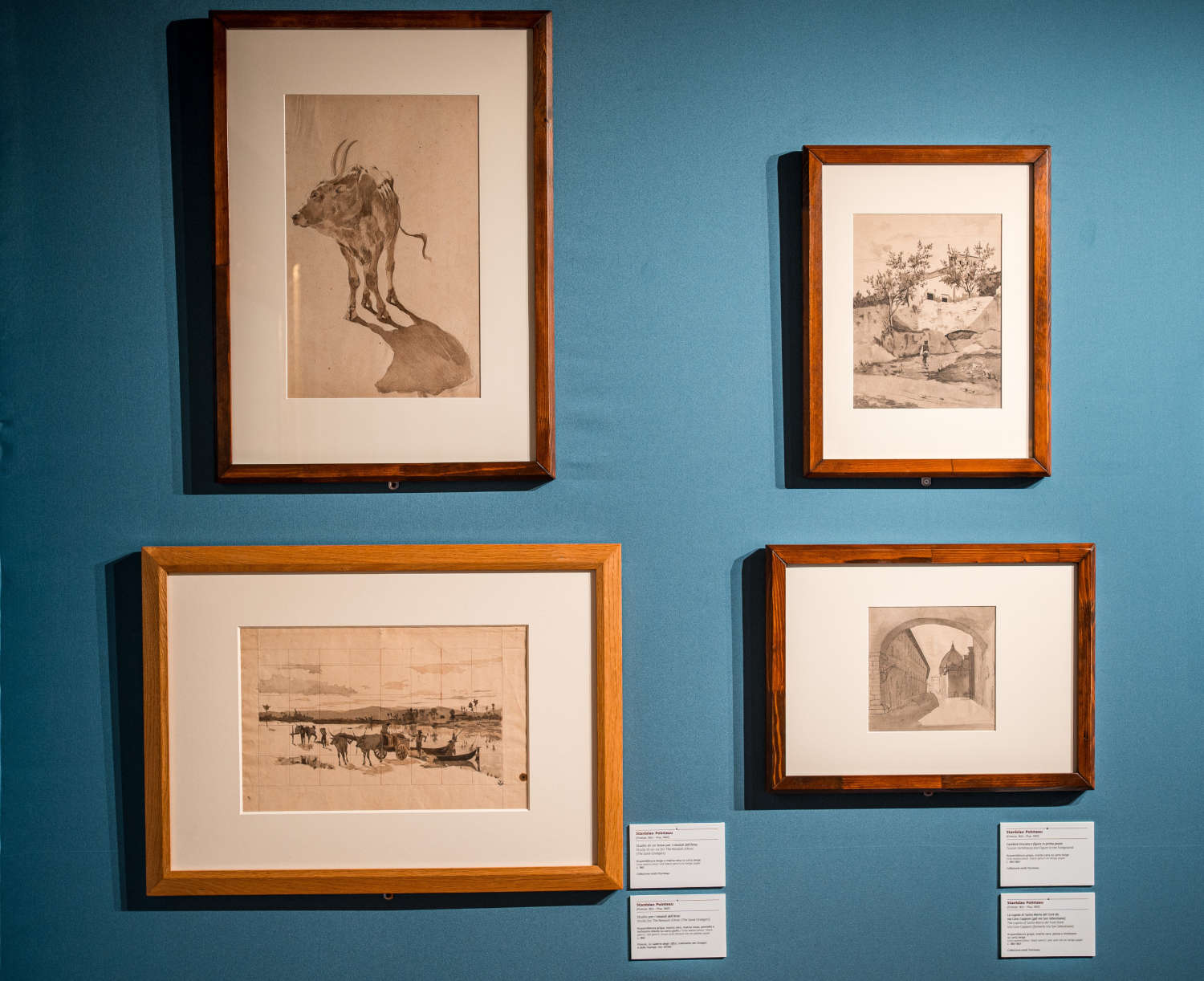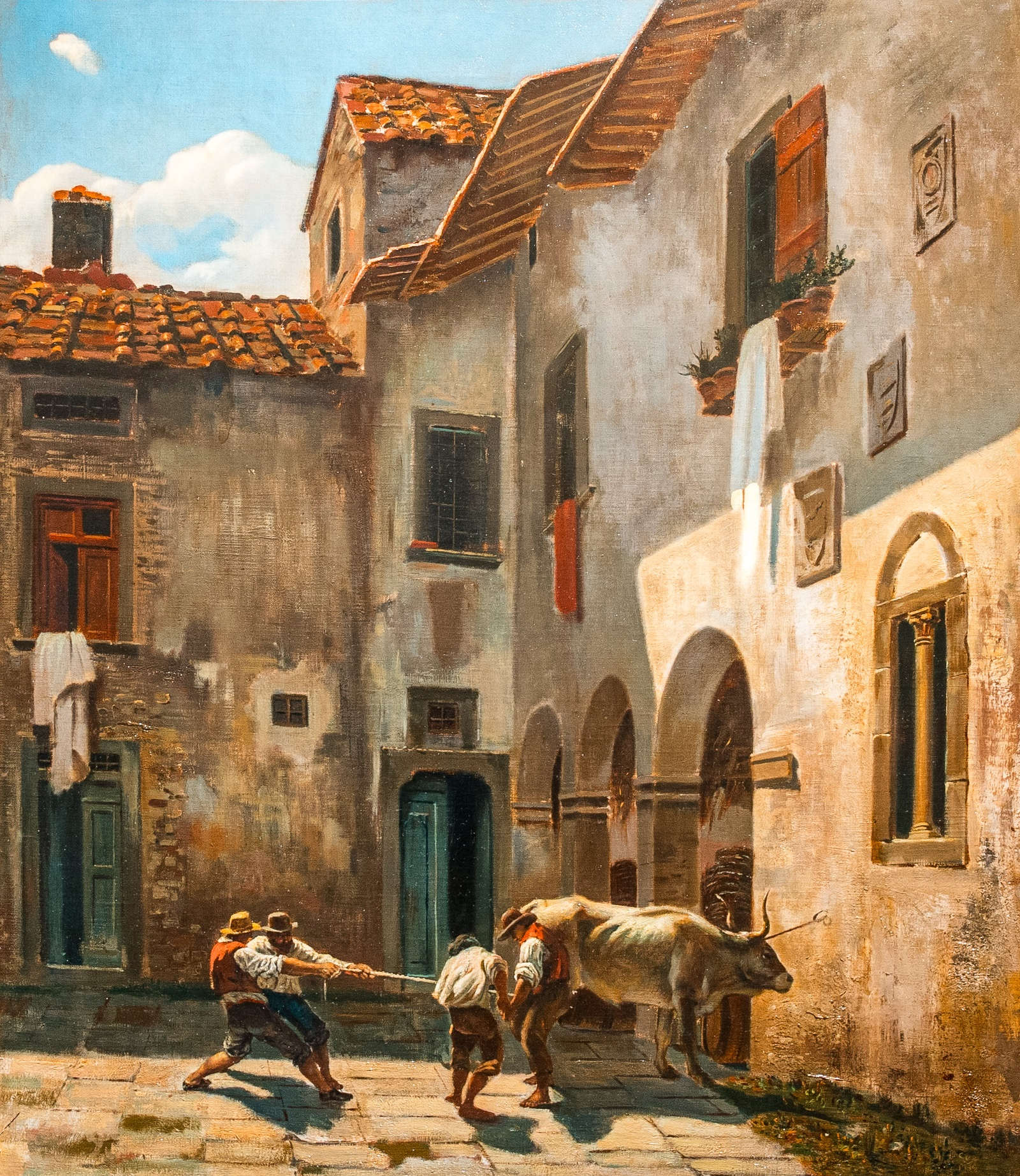A Macchiaiolo to be rediscovered: Stanislao Pointeau on display for Uffizi Diffusi
Until Feb. 16, 2025, the “Giuliano Ghelli” Museum in San Casciano in Val di Pesa (Florence) is hosting an exhibition dedicated for the first time to Stanislao Pointeau (Florence, 1833 - Pisa, 1907), the French-Florentine painter who played a fundamental role in the birth and evolution of the Macchiaioli movement. The exhibition, entitled Stanislao Pointeau: a Tuscan Macchiaiolo of French origin, is curated by Michele Amedei and organized by the Municipality of San Casciano in Val di Pesa, with the collaboration of the Fondazione CR Firenze and the Uffizi Galleries. The exhibition is part of the Piccoli Grandi Musei and Uffizi Diffusi projects, which aim to spread knowledge of art through initiatives of great cultural and historical value.
The exhibition, which showcases about forty works including paintings and drawings, is also a tribute to Sancascian art historian Carlo del Bravo, who in the 1970s discovered and rediscovered Pointeau’s importance through his research, restoring to the artist the proper recognition his art deserved. The figure of Pointeau, who was able to combine the influence of French painting with the innovation of the Tuscan school, is presented here in a new perspective, which examines his connection with the protagonists of the Macchiaioli movement and with the painting of the second half of the 19th century.
“This exhibition,” says Bernabò Bocca, president of Fondazione CR Firenze, "comes at the completion of the fourth year of the Terre degli Uffizi project that sees our institution collaborating with Italy’s most important museum. The aim is to encourage more widespread enjoyment of the Uffizi Galleries’ collections and, at the same time, to encourage more sustainable tourism. It is also important to make our fellow citizens increasingly aware of the extraordinary richness of the territory in which they live. The great favor received by the exhibitions set up so far confirms that the objectives are right. This project, which aims to enhance the regional artistic heritage, is an extension of the territorial cultural marketing program “Small Great Museums” that the Foundation launched years ago.’’
A Franco-Florentine painter between Tuscany and France.
Stanislaus Pointeau was born in Florence in 1834, the son of Jean Louis, a wine representative originally from Blois, and Giovanna Piacenti, a Florentine. His artistic training began at the Accademia di Belle Arti in Florence, where, from a young age, he came into contact with some of the most important artists of the time. Over the years, Pointeau became a central figure in the Florentine artistic scene, taking an active part in the city’s cultural life and frequenting the Caffè Michelangiolo, one of the most important meeting places for Tuscan artists. In that context, he got to know and collaborate with some of the leading exponents of the Macchiaiolo movement, including Telemaco Signorini, and developed his own style that fused French artistic traditions with the innovations of Tuscan painting.
His art was part of a time of great ferment, in which Italian and French painters influenced each other, with the aim of capturing reality through new modes of expression. The "macchia," a technique that aimed to render the light and color of nature through contrasting patches of color, became one of the main tools in the works of Pointeau, who was able to interpret sunlight and the natural environment in a unique way, while maintaining a strong connection with the French tradition.



The exhibition itinerary: from the macchia to the Symbolist turning point
The exhibition, divided into four sections, explores the entire career of Stanislao Pointeau, from his beginnings to his artistic maturation in the context of the Macchia, to his evolution toward Symbolism in later years.
The first section, Stanislao Pointeau, Sienese and French Friends in Mid-nineteenth-Century Florence, introduces visitors to the young artist and his role as a mediator between the two cultures, Tuscan and French. Engravings by Marcellin Desboutin, a French artist friend of Pointeau, are presented, as well as a series of portraits of Stanislaus by Sienese painters Angelo Visconti and Amos Cassioli, which depict the young artist in the years between 1859 and 1861, shedding light on his figure and his relationship with the artistic milieu of the time.
The second section, From Artistic Beginnings to the ’Macchia,’ brings together a selection of paintings and drawings documenting Pointeau’s early career, including sketches made in 1851 during a trip to Mugello, an area that would become fundamental to the development of his painting style. These works offer an overview of his early experiments and approach to nature, which would later become the core of his artistic production.
The heart of the exhibition is represented by the third section, The ’Macchia’ Years, which explores Pointeau’s relationship with the Macchiaioli movement, of which he was one of the leading figures. This section presents some of the artist’s most emblematic works, such as Renaioli sull’Arno and La ferratura del bove, paintings that testify to his adherence to the movement and his contribution to its evolution. Alongside these works, there is also the painting Sulle rive dell’Arno, a work by Telemaco Signorini, which highlights the intense collaboration between the two artists and the link with Macchiaioli painting.
Thelast section, The sojourns in Southern Italy and the move to Pisa in 1867, documents the final phase of Pointeau’s career, when he moved to Pisa, where he gradually moved away from the experiments of the Macchia to embrace a Symbolist painting, influenced by international artistic currents and contact with the community of English artists linked to Nino Costa. During this phase, the artist devoted himself to more introspective and poetic subjects, marking a decisive turning point in his creative path.
“The exhibition itinerary,” explains Uffizi director Simone Verde, “sheds unprecedented light on the French painter’s relationship with the international art milieu, as revealed by the precious engravings of Marcellin Desboutin, while his connection with the Macchiaioli group is devoted to a section that is also the centerpiece of the exhibition and includes one of the most important loans from the Uffizi Galleries, Sulle rive dell’Arno, by Telemaco Signorini, preserved in the Gallery of Modern Art in Palazzo Pitti.”




A tribute to Carlo del Bravo and the rediscovery of the artist
The exhibition, which is part of the program to enhance the value of small and large Tuscan museums, is also a tribute to Carlo del Bravo, the art historian whose efforts made it possible to rediscover the importance of Stanislao Pointeau. His figure was instrumental in bringing the artist back into the limelight, helping to shed light on his central role in the development of Macchiaioli painting. The exhibition not only celebrates Pointeau’s work, but also represents an important moment of reflection on the history of Tuscan art and the value of historical research that continues to unveil new protagonists and renew our understanding of the past.
“Stanislaus Pointeau, a great nineteenth-century painter of Florentine and French origin, an artist loved and rediscovered by Carlo Del Bravo, whom we are happy to enhance in our territory, in the heart of the Tuscan countryside that the protagonist loved to depict,” says Roberto Ciappi, mayor of San Casciano in Val di Pesa. “The Museum of San Casciano hosts some 40 works including paintings and drawings, most of them never seen before, through an exhibition curated by art historian Michele Amedei that aims to highlight the many faces of Pointeau. He was not only a talented artist with far-sighted insights and visions that were open to the world, one of the most appreciated exponents of the Macchiaioli current, but a cultural mediator of international scope, who should be credited with the undoubted merit of having built a bridge, a dialogue that became a major link between Italian and French art in the second half of the 19th century. We are therefore realizing an important exhibition dedicated to Pointeau thanks to the studies of Carlo Del Bravo in whose memory we continue to produce culture and promote operations to popularize and enhance the history of’Italian art, to the close and fruitful collaboration with Le Gallerie degli Uffizi, the Fondazione CR Firenze, our valuable partners with whom we had the honor and privilege of working also on the occasion of the successful exhibition that paid tribute to Jacopo Vignali, and some private individuals who allowed us to exhibit their works signed by Pointeau.”
The exhibition is accompanied by a catalog that includes, in addition to images of the works on display, photographs that belonged to Pointeau, and unpublished shots by photographers of the time such as Antonio Caneva that were used by the artist to paint landscapes on canvas and paper. The exhibition opens Mondays from 9 a.m. to 1 p.m., Tuesdays, Thursdays and Fridays from 3 to 7 p.m., Saturdays and Sundays from 10 a.m. to 1 p.m. and 3 to 6 p.m. Closed Wednesdays. For info: 055 8256385, museo@comune.san-casciano-val-di-pesa.fi.it
 |
| A Macchiaiolo to be rediscovered: Stanislao Pointeau on display for Uffizi Diffusi |
Warning: the translation into English of the original Italian article was created using automatic tools. We undertake to review all articles, but we do not guarantee the total absence of inaccuracies in the translation due to the program. You can find the original by clicking on the ITA button. If you find any mistake,please contact us.





























